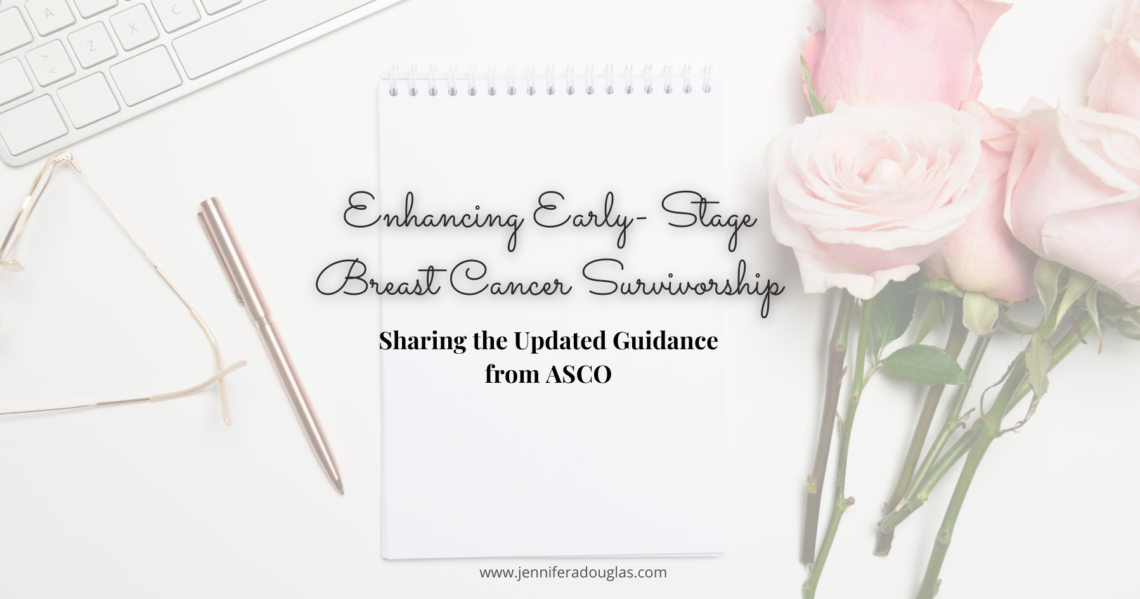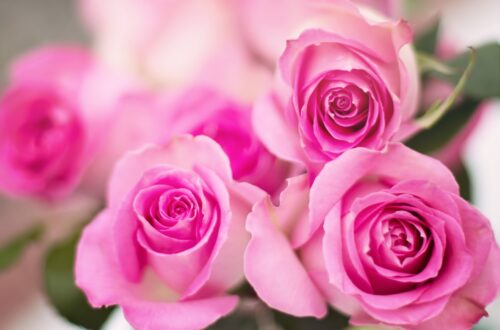
Enhancing Early-Stage Breast Cancer Survivorship: Updated Guidance From ASCO
What is the latest in early-stage breast cancer survivorship? In May 2024, ASCO—the American Society for Clinical Oncology—updated its educational book in light of the newest technologies and research. This educational book is free and available for anyone to read!
So, what is discussed in this early-stage breast cancer survivorship educational book? It focuses on three primary areas of survivorship care: Lifestyle Modification, Circular Tumor DNA surveillance, and Local Breast Imaging Surveillance. Each area is discussed in detail, addressing the latest research and medical technology.
Lifestyle Modification for Early Stage Breast Cancer Survivors
What can we do as breast cancer survivors to reduce our risk of recurrence? Do we need to completely eliminate one food group, go on a rigid diet, or exercise 5 hours a day?
Thankfully, no!
The most effective things we can do to reduce our risk of recurrence are:
- Maintain a healthy weight
- Eat well- focusing on quality ingredients and avoiding heavily processed food
- Reduce our alcohol consumption
- Avoid sugar-sweetened drinks
- Exercise at a moderate intensity for 150 minutes or more a week.
One of the areas I decided to focus on after I finished treatment was exercising. I was always an active child, but my routines had slipped once I had kids. I knew it was important for them to get out and play, but I was too tired to get out with them. Walking was a part of my routine, but that was the extent of my exercising.
After breast cancer, I decided to change that. At first, I was exhausted and had no energy. I remember needing to pause my workouts to catch my breath. But I kept on persisting. It took time to rebuild my stamina.
We don’t need to be perfect at all these or give ourselves guilt trips if we drink a soda occasionally. The goal is to prioritize these areas and integrate them into our lives in a way that we can stick with.
What About Whole Body Imaging (like PET scans) for Recurrence?
As an early-stage breast cancer survivor, do I need a PET scan? How do the doctors know if the breast cancer has spread to another area?
“Despite the potential introduction of more sensitive imaging technologies, a core issue remains unchanged: imaging surveillance only detects metastatic disease when it is radiographically evident, at a stage typically considered incurable.” (link)
I think this part of the article was the hardest for me to read. The reality of breast cancer is that if it spreads outside of our breasts, it isn’t considered curable anymore. Treatments are improving and elongating the lives of Metastatic Breast Cancer Patients. However, at some point, the treatments fail. And these treatments all come with side effects.
This article focuses on early-stage breast cancer survivorship and doesn’t recommend asymptomatic PET scans for this group of survivors.

Circulating Tumor Surveillance
Should my oncologist be ordering blood tests to see if there is any residual cancer in my blood? Will these tests improve my quality of life?
Many new and exciting technologies are being developed to test our blood for circulating cancer tumor markers. These tests, often called liquid biopsies, can detect these markers before imaging can.
Shouldn’t we all be getting these liquid biopsies?
Not yet, according to this article. “In the absence of compelling evidence of significant benefit that could lead to improved survival or patient quality of life, these interventions should be considered in the context of a clinical trial.”
Trials are underway, and the results may change the guidance in the future.
What About Breast Imaging After Cancer?
When should we get mammograms? How often do we need them? Should we also get MRIs and ultrasounds? What about screening versus diagnostic mammograms?
This article closes by outlining the recommendations for breast imaging after treatment finishes. The goal of this imaging is to detect a recurrence or new breast cancer early so that we have the best chance of surviving it.
We all need annual mammograms— the research is clear on that.
We also may need additional imaging, such as MRIs and ultrasounds. Additionally, new imaging technologies are being developed that may help detect breast cancer better in dense breasts.
The article includes a very helpful graphic outlining the recommendations for each imaging modality by the major cancer organizations.
“Post-treatment imaging surveillance is a key element in survivorship care for early second breast cancer detection allowing for interventions which can not only improve survival but also maintain quality of life.”
This was a comprehensive article, and I appreciated the overall focus on our quality of life after breast cancer. It was cautious in its guidance about new technologies to detect Metastatic Breast Cancer, opting to pause until the research shows clear benefits to early-stage breast cancer survivors.
As I head into my fifth year of survivorship, I remind myself to keep making those imaging appointments and continue to pursue a life I enjoy.
And now, I think I may have a dance workout to do….
Jennifer Douglas
Jennifer Douglas is an author, patient advocate, and DCIS breast cancer survivor. After navigating her own breast cancer journey in 2019, she began writing and encouraging others who were newly diagnosed. Her resources include her book, "A Breast Cancer Journey: Living It One Step at a Time," and her online support course, "Encourage: Breast Cancer and Beyond." Jennifer also actively supports patients through her online presence and direct involvement in communities and support groups, offering guidance and encouragement every step of the way.


You May Also Like

Treatment Text Shortcuts in iOS: A Quick and Easy Way to Update Your Cancer Support Team
October 12, 2021
How to Understand Your Mammogram Results
July 31, 2020
